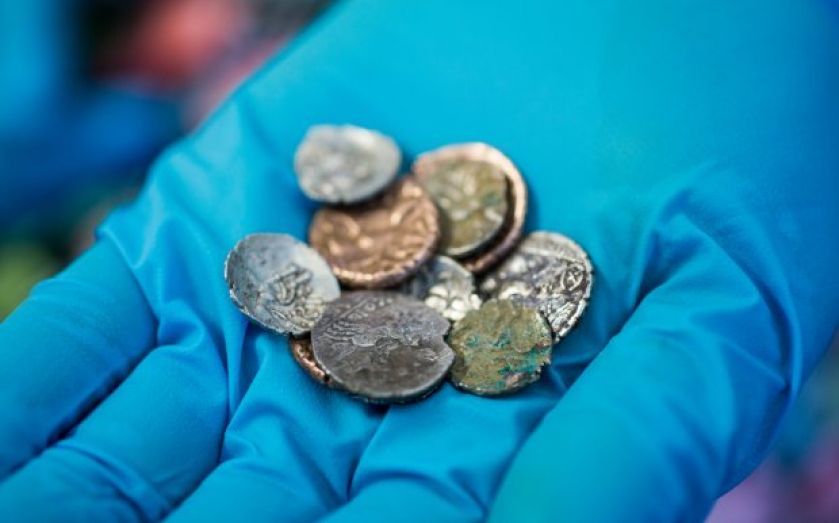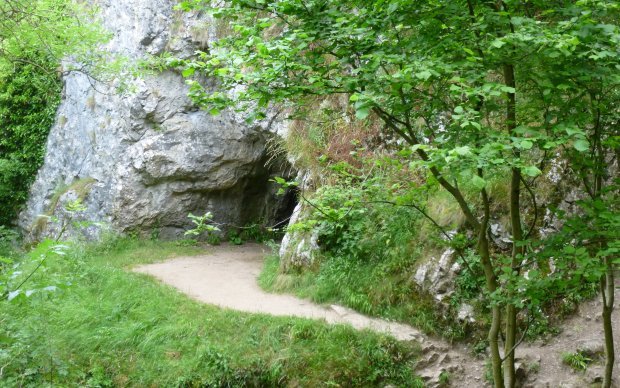Roman and iron age coins found in Derbyshire cave: Could they have belonged to an ancient speculator?

The discovery of 26 coins at Reynard's Kitchen Cave in Dovedale, Derbyshire, has historians faced with something of a mystery.
The 26 coins unearthed include artefacts both of Roman and late iron age origin – the first time coins of these two have been found buried together in a British cave – along with a decorated Roman brooch.
Of those coins, three are Roman and pre-date the British invasion under then Emperor Claudius in AD43. National Trust archaeologist Rachael Hall says that the 20 gold and silver coins dating from the late iron age are attributed to the Corieltavai tribe.
"The tribe is more usually associated with occupying areas further east during the late iron age, where the tribal centres are thought to be Leicester, Sleaford, and Lincoln", says Hall. So how did these coins end up together?
Hall suggests that the large number of coins found suggest that the individual who owned them had a serious amount of power, as cash like this was "used more as a symbol of power and status during the late iron age, rather than for buying and selling staple foods and supplies".
It may be that the owner was hiding their most prized possessions away, only to be rediscovered 2,000 years later. Or maybe the hoard belonged to a speculator, who hoped that the value of the coins would increase. Hall suggests the collection could be like a modern-day Isa.
But keen investors living under Roman rule would have faced a significant problem: emperors were prone to devaluing the currency. In their book, "Forty Centuries of Wage and Price Controls", Robert Schuettinger and Eamonn Butler note that this created incentives for investors to hoard their best coins.
In the late and republic and early empire, the standard Roman coin was the silver denarius. But successive emperors drastically increased the money supply, to the point where in the years before Diocletian, emperors were issuing tin-plated copper coins still known as the denarius.
Schuettinger and Butler write that this saw Gresham's law come into effect: bad money drives out good. Unlike today, the value of the coin was tied closely to that of the metal used to create it, so silver and gold coins were naturally hoarded. Jean-Philippe Levy, author of "The Economic Life of the Ancient World", notes that while it was forbidden to buy or sell coins, and even to hoard them, efforts to enforce these rules "were to no purpose".
Hoarding became incredibly attractive, leaving the monetary system of Rome in total disarray. Schuettinger and Butler say that the "trade which had been a hallmark of the empire was reduced to barter and economic activity was stymied" as coin owners no longer wanted to part with their money.
Thankfully for the owner of the Dovedale hoard, the worst of this likely began after he had died, as the debasement really began to kick in under Emperor Nero, from AD54-68. Marcus Aurelius would then reduce the weight of coins in AD161-80.
During the fourth century, the devaluation was dramatic. Schuettinger and Butler write that "the value of the [Roman] gold solidus change from 4,000 to 180m Egyptian drachmai". And in the 50 years ending with the rule of Claudius Victorinus in AD268, the silver content of the Roman coin had dropped to 0.5 per cent of its original level.
The coins have now been cleaned by conservation specialists at the British Museum and University College London, and will go on permanent display at Buxton Museum later this year.

Reynard's Kitchen Cave, in Dovedale, Derbyshire (Source: National Trust)